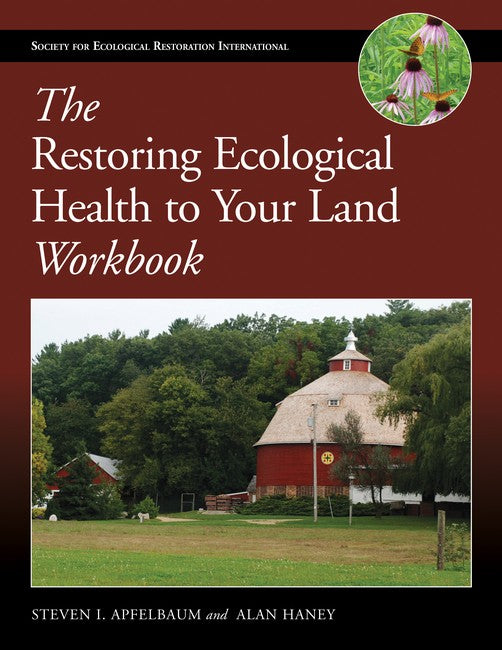Preface
Introduction
Step 1. Inventory and Map Your Land
-Task 1. Create a Basemap Task
-Task 2. Characterize Land Use or Cover Types
-Task 3. Refine Ecological Units
-Task 4. Map Current Conditions of Ecological Units
-Task 5. Review Soil Type Distribution and Assess Seedbanks
-Task 6. Map Drainage
-Task 7. Map Locations of Significant Populations of Invasive Species
-Task 8. Assess and Map Stressors
Step 2. Investigate Historic Conditions
-Task 9. Complete Historic Conditions Data Form
-Task 10. Map Soils and Surface Geology
-Task 11. Understand How Your Land Has Changed
Step 3. Interpret Landscape Changes
-Task 12. Develop Working Hypotheses
-Task 13. Map Ecotones and Gradients
Step 4. Develop Goals and Objectives
-Task 14. Develop Restoration Goals and Objectives
-Task 15. Review and Firm up Framing Infrastructure
-Task 16. Develop a Project Governance Plan
-Task 17. Prepare a Preliminary Budget
-Task 18. Refine Goals and Objectives
Step 5. Develop Your Restoration Plan
-Task 19. Design the Outline (Content) of Your Plan
Step 6. Develop a Good Monitoring Program
-Task 20. Develop Your Monitoring Program
Step 7. Implement the Plan
-Task 21. Develop a Task List and Schedule
-Task 22. Develop Project Phasing Plans
-Task 23. Develop Detailed Specifications
-Task 24. Determine Restoration Methods and Equipment Needs
-Task 25. Procure Plants, Seeds, and Materials
-Task 26. Complete Final Budget
-Task 27. Develop Long-term Maintenance Budget and Endowment
Step 8. Maintain Good Records
-Task 28. Decide What Will Be Recorded
-Task 29.Develop a Record-keeping Strategy
Step 9. Review the Project
-Task 30. Schedule Semiannual and Annual Reviews
-Task 31. Refine the Restoration Program as Suggested by the Review
Step 10. Share the Restoration Process
-Task 32. Develop a Plan for Sharing Your Experiences
Appendix 1: Data Forms
Appendix 2: Equipment, Safety, and Protection for Restoration Planning
Appendix 3: Restoration Contracts
Appendix 4: Additional Resources for Readers
SER booklist
Introduction
Step 1. Inventory and Map Your Land
-Task 1. Create a Basemap Task
-Task 2. Characterize Land Use or Cover Types
-Task 3. Refine Ecological Units
-Task 4. Map Current Conditions of Ecological Units
-Task 5. Review Soil Type Distribution and Assess Seedbanks
-Task 6. Map Drainage
-Task 7. Map Locations of Significant Populations of Invasive Species
-Task 8. Assess and Map Stressors
Step 2. Investigate Historic Conditions
-Task 9. Complete Historic Conditions Data Form
-Task 10. Map Soils and Surface Geology
-Task 11. Understand How Your Land Has Changed
Step 3. Interpret Landscape Changes
-Task 12. Develop Working Hypotheses
-Task 13. Map Ecotones and Gradients
Step 4. Develop Goals and Objectives
-Task 14. Develop Restoration Goals and Objectives
-Task 15. Review and Firm up Framing Infrastructure
-Task 16. Develop a Project Governance Plan
-Task 17. Prepare a Preliminary Budget
-Task 18. Refine Goals and Objectives
Step 5. Develop Your Restoration Plan
-Task 19. Design the Outline (Content) of Your Plan
Step 6. Develop a Good Monitoring Program
-Task 20. Develop Your Monitoring Program
Step 7. Implement the Plan
-Task 21. Develop a Task List and Schedule
-Task 22. Develop Project Phasing Plans
-Task 23. Develop Detailed Specifications
-Task 24. Determine Restoration Methods and Equipment Needs
-Task 25. Procure Plants, Seeds, and Materials
-Task 26. Complete Final Budget
-Task 27. Develop Long-term Maintenance Budget and Endowment
Step 8. Maintain Good Records
-Task 28. Decide What Will Be Recorded
-Task 29.Develop a Record-keeping Strategy
Step 9. Review the Project
-Task 30. Schedule Semiannual and Annual Reviews
-Task 31. Refine the Restoration Program as Suggested by the Review
Step 10. Share the Restoration Process
-Task 32. Develop a Plan for Sharing Your Experiences
Appendix 1: Data Forms
Appendix 2: Equipment, Safety, and Protection for Restoration Planning
Appendix 3: Restoration Contracts
Appendix 4: Additional Resources for Readers
SER booklist

